Draper's Hall: Inside the exquisite and spectacular place that's one of the finest halls in London
A restoration project revives the spectacular interior of one of Draper's Hall, one of London’s finest Livery Halls. John Goodall looks at the origins and history of the body that created it. Photographs by Will Pryce.
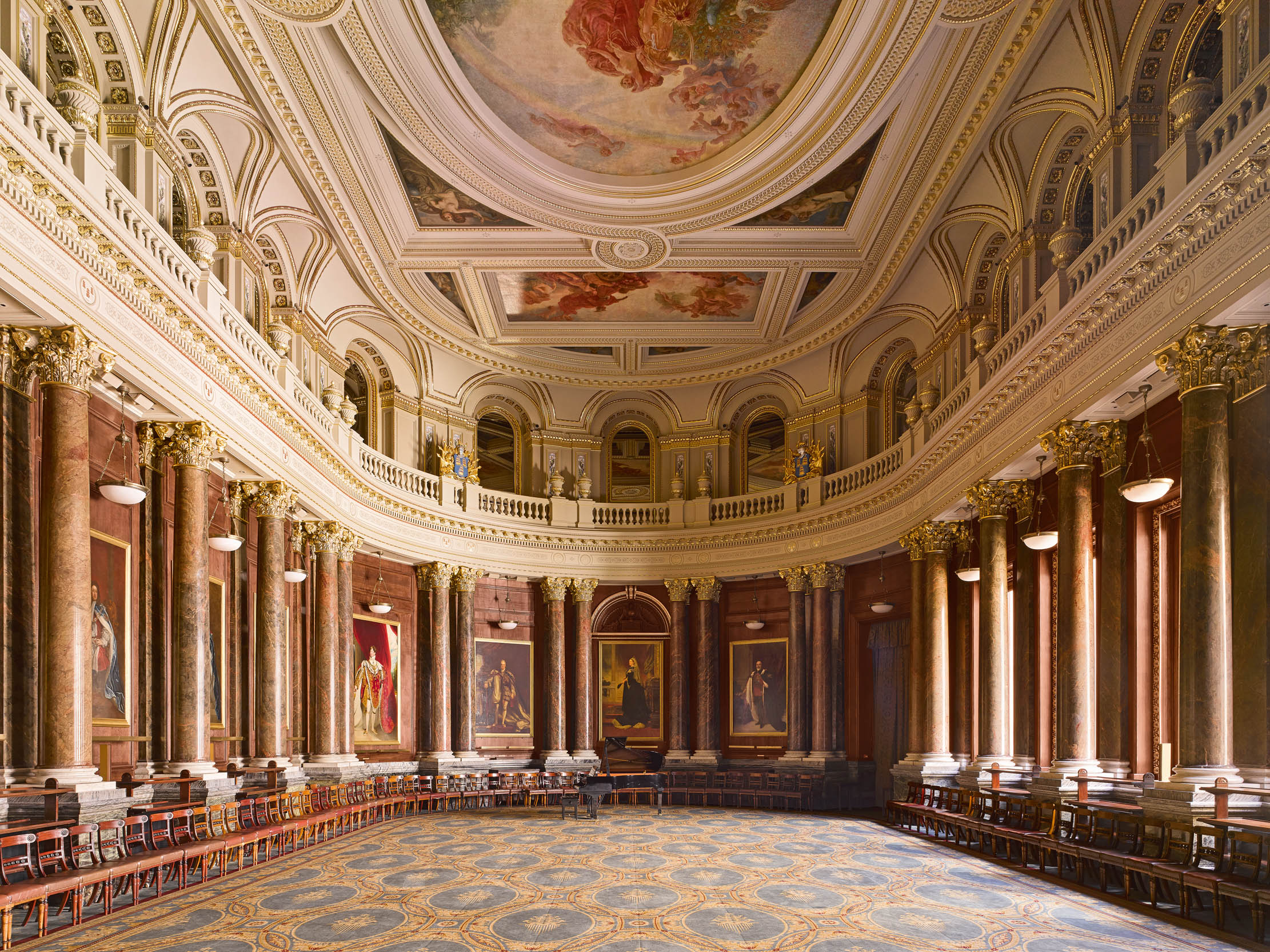

Anyone who passes along Throgmorton Street in the heart of the City must have their eye drawn to an enormous sculpted doorcase, supported on the back of two larger-than-life turbaned figures and crowned with a huge heraldic achievement (Fig 1). This is the front door to Drapers’ Hall, an institution that traces its history back into the Middle Ages and ranks third in precedence in the hierarchy of the Great Twelve City Livery Companies.
By its scale and quality, this entrance proclaims itself to be important. Set within a long frontage of numerous sections, however, it’s not immediately apparent what the doorcase relates to. That is because, in the 1890s, the Drapers’ Company redeveloped the commercially valuable street frontage of its hall as shops. The arrangement accentuates the visitor’s astonishment when they cross the threshold and discover one of the most opulent and spacious historic buildings in the City.
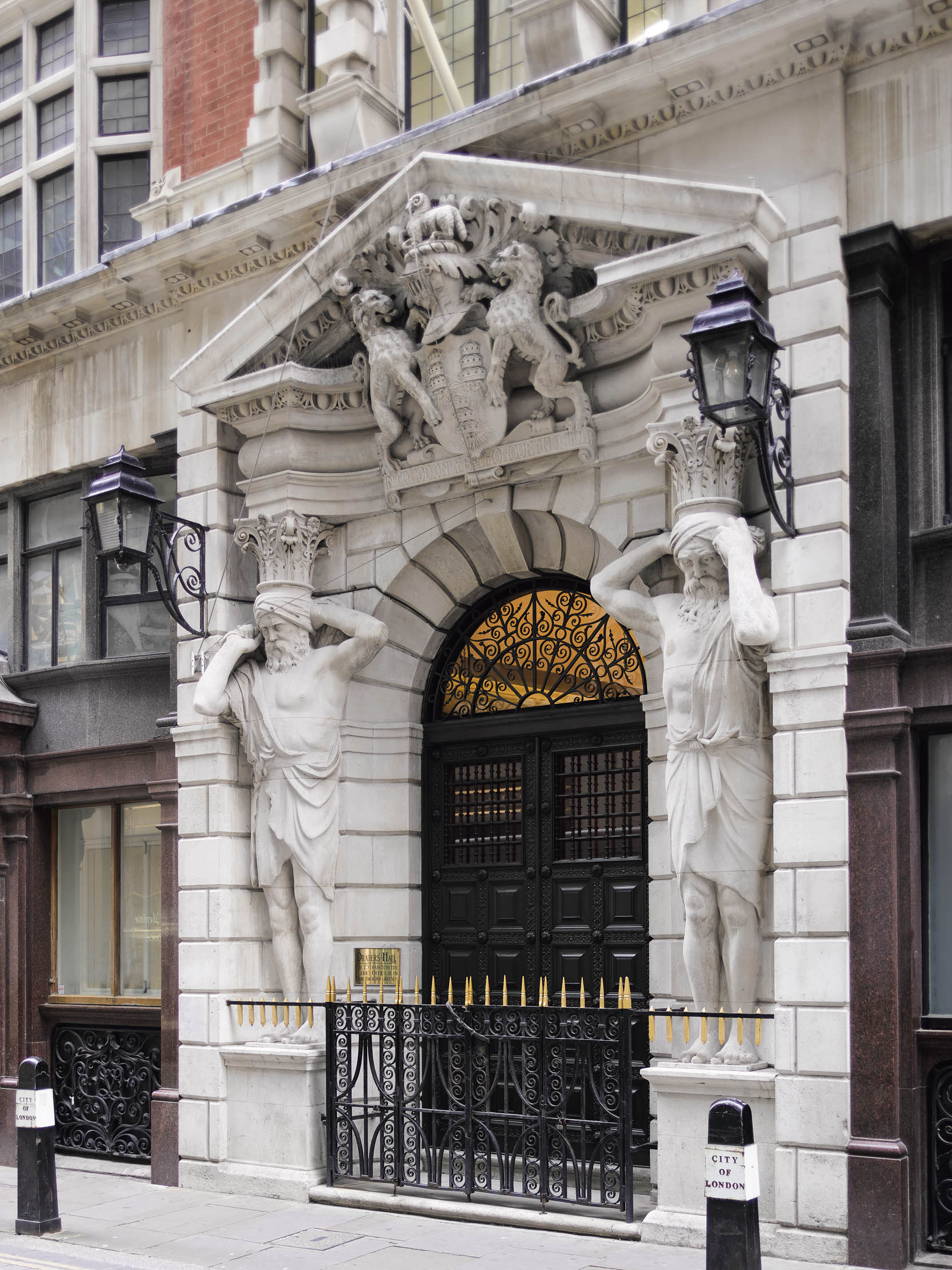
The Drapers’ Company can securely trace its history back into the 14th century. In 1388, Richard II instituted an enquiry to discover the customs, privileges and possessions of religious fraternities across the realm.Documented in the returns was a Brotherhood in honour of ‘Our Lord Jesus Christ and his sweet Mother Saint Mary of Bethlehem, in which place of Bethlehem the Star appeared to the Shepherds and gave and showed light to the three Kings of Cologne’.
According to the return, this brotherhood had been established on the feast of the Purification of the Virgin (February 2), 1361, by the ‘Drapers of Cornhill’ and ‘other good men and women’ for ‘the amendment of their lives’ by ‘the assent of Brother William Tytte’ of the Hospital of Our Lady of Bethlehem, London. It’s not now clear how the association with the Bethlehem Hospital colloquially known as ‘Bedlam’ (then standing on the site of what is now Liverpool Street Station) came about; nor the nature of the assent given by Tytte, who later became the last Master of that institution.
The return goes on to describe the essentially conventional organisation of the fraternity, which was governed by elected ‘wardens’. Its brethren — both men and women — gathered four times a year, on pain of a fine, to pay collective dues towards a common fund that could be used for devotional and charitable purposes. The chief of these gatherings fell on February 2, when there was an annual audit of accounts, followed by a communal feast. On this occasion, the brethren paid their share of the cost, as well as that for any guests they brought.
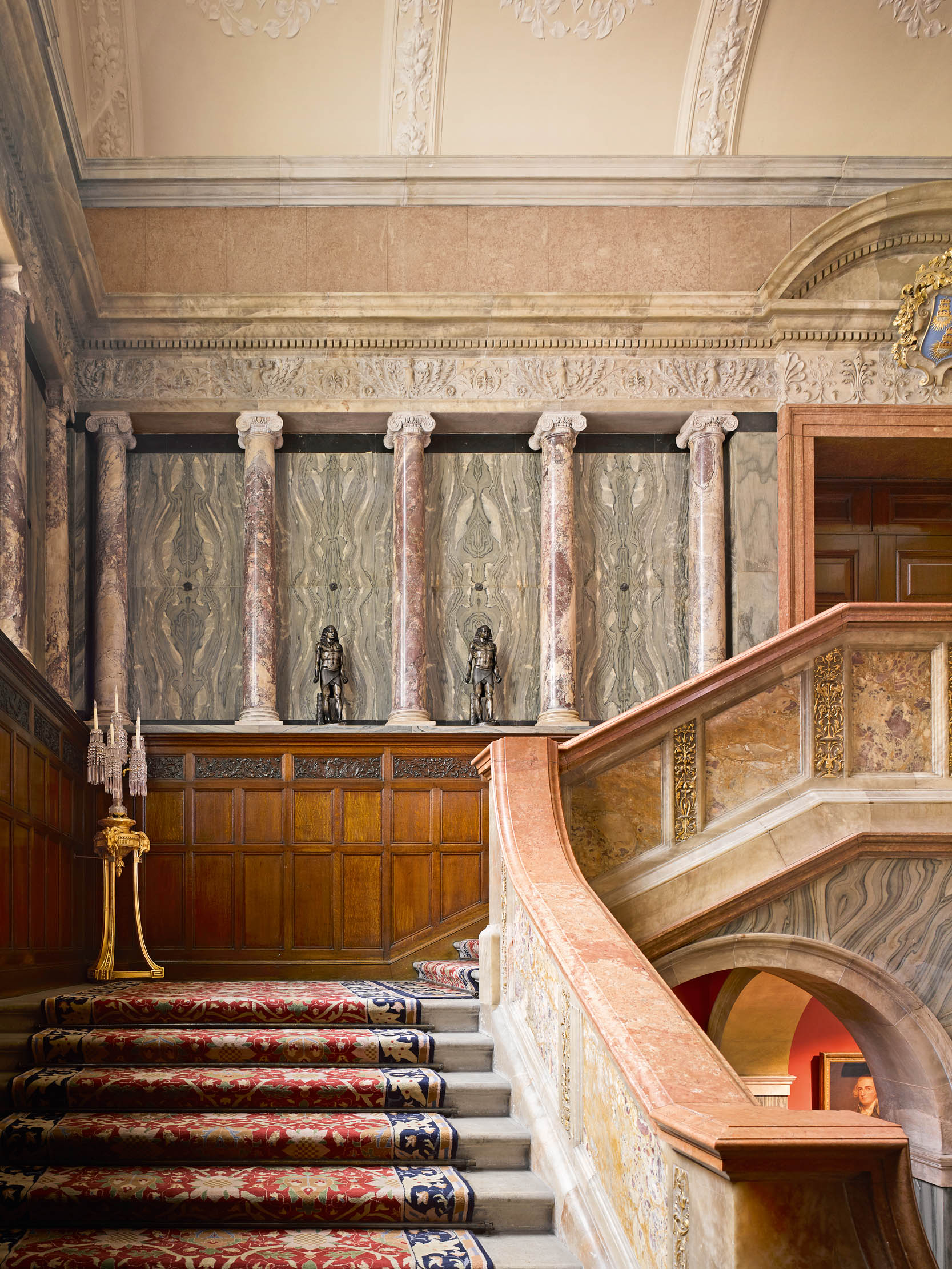
The essential structure of this fraternity has shaped the life of the Drapers’ Company ever since. Particular importance has always been attached to splendid hospitality, a tradition recently explored in an edition of The Dinner Book 1564–1602 (London Record Society, 2019) by Sarah Milne. It continues, of course, to the present. Brethren in 1388 also paid for a distinctive livery that had to be worn for all formal gatherings, including for the funerals of their fellows. There were fines for wearing the livery in inappropriate situations, such as when playing games.
At the conclusion of the return, there is a note that three years previously — in 1385 — the brethren had invested money in a property on St Swithun’s Lane, with the intention of using its revenue to endow the post of a chaplain. In the event, legal wranglings over the ownership of this property preserved it for another use, as we shall see. In the meantime, the founding connection with those involved in the trade or ‘mystery’ of drapers — merchants who dealt with wool woven into cloth — began to transform the fraternity.
Sign up for the Country Life Newsletter
Exquisite houses, the beauty of Nature, and how to get the most from your life, straight to your inbox.
High-quality wool was the cash crop of England’s medieval economy. Royal attempts to regulate this vastly lucrative business forced the specialist professionals involved in each stage of converting wool into cloth to define the remit of their labour and protect it. Consequently, in 1364, Edward III issued a licence that granted exclusive right to London drapers to practise their ‘mystery’ — as distinct from the mysteries of dyers, weavers and fullers — in and around the capital. He further handed over the task of policing the arrangement and maintaining quality to the same individuals, represented by four elected warden drapers.
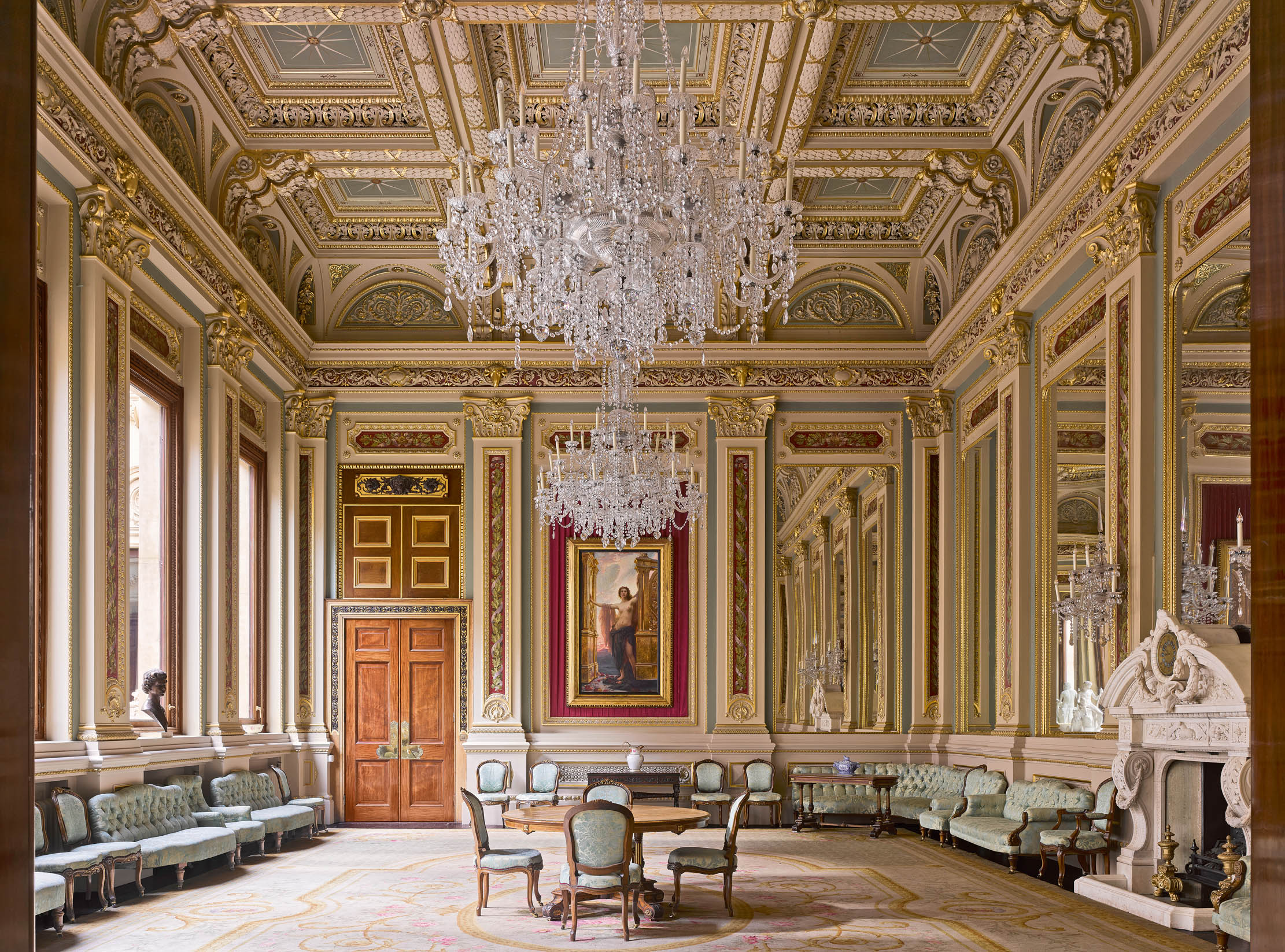
In the first quarter of the 15th century, the terms of the 1364 royal licence became institutionalised within the framework of the fraternity. This must have seemed a perfectly natural evolution and one that was reinforced by the personalities involved. In the meantime, connection with the mystery brought a steady flow of valuable bequests to the fraternity. As a result, the link with Bedlam was replaced with connections to the City parish church of St Mary le Bow (and, from 1503, to St Michael’s Cornhill).
Such was the confidence of the fraternity that, in 1425, it began a purpose-built hall on its St Swithun’s Lane site. The first feast was held there in 1430. Whether by design or good fortune, part of the plot of land on which it stood demonstrably formed a tenter ground for drying newly fulled cloth that had been owned in the late 12th century by Henry Fitzalwyn, the first Mayor of London. From this connection grew the story, vigorously promoted from at least the 16th century, that Fitzalwyn was a draper and that the history of the company — albeit undocumented — could be traced back to his lifetime.
In 1438, the fraternity was incorporated by Royal Charter, a change that effectively formalised its transformation into the governing body of the mystery of drapers in London. Accompanying these changes was an intriguing shift in devotional emphasis, from the Purification of the Virgin to the Feast of the Assumption of the Virgin (August 15), a triumphal celebration of Mary’s glorious entry into Heaven and her coronation there.
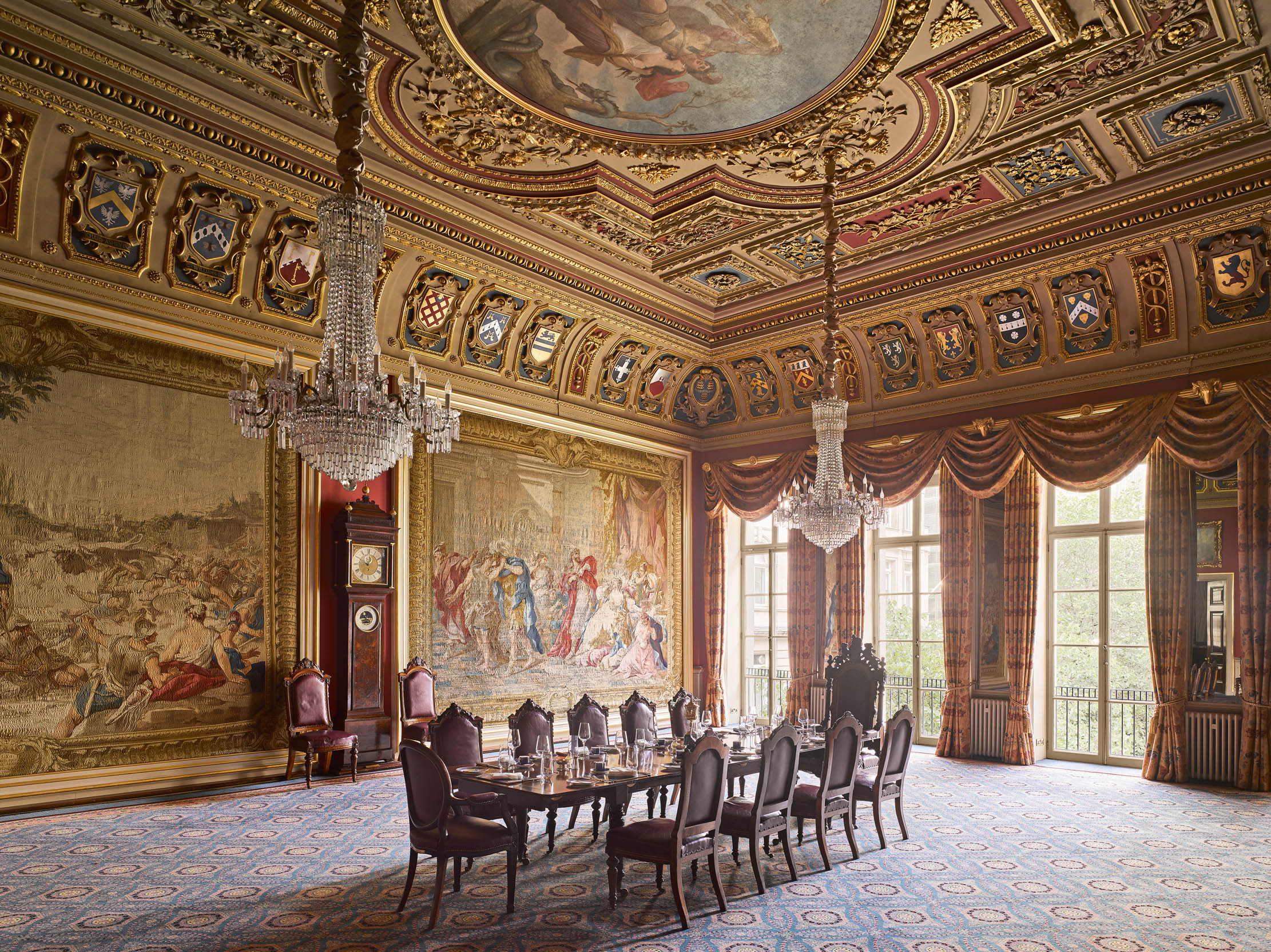
These themes informed the arms that were granted to the ‘Mystery of Drapers’ the following year. It incorporates the repeated motif of an ‘imperial’ or triple crown set on a cloud with sunbeams issuing from it, a reference to the Virgin as the mother of the ‘imperial sun’, Christ. It’s a device that appears throughout Drapers’ Hall today. The common seal, created at the same time, shows the Virgin crowned with a triple crown sheltering the members of the mystery beneath her cloak.
The Drapers’ Company remained in its first hall until the Reformation, by which time the building no doubt appeared modest. Exactly how wealthy the company had become was reflected by its successful negotiation, in 1543, to buy its present premises, the former home of Henry VIII’s disgraced secretary, Thomas Cromwell, created next to the monastic foundation Austin Friars by the incremental purchase and appropriation of land. It cost the princely sum of 1,800 marks (£1,200).
From its new home, the Drapers’ Company continued to expand. In 1560, it received a second foundation charter from Elizabeth I and, in 1607, it was incorporated (again) by James I. As were many City companies, it was involved in the Plantation of Ulster.
Over the same period, the charitable activities that the company had long undertaken began to be extended and formalised. In 1574, it assumed responsibility for the almshouse called Queen Elizabeth College, Greenwich, and, in 1593, was entrusted with the management of its first school at Barton, Staffordshire. Such philanthropic work remains central to the role of the company today, which directly supports 24 educational establishments, as well as many other charitable endeavours.
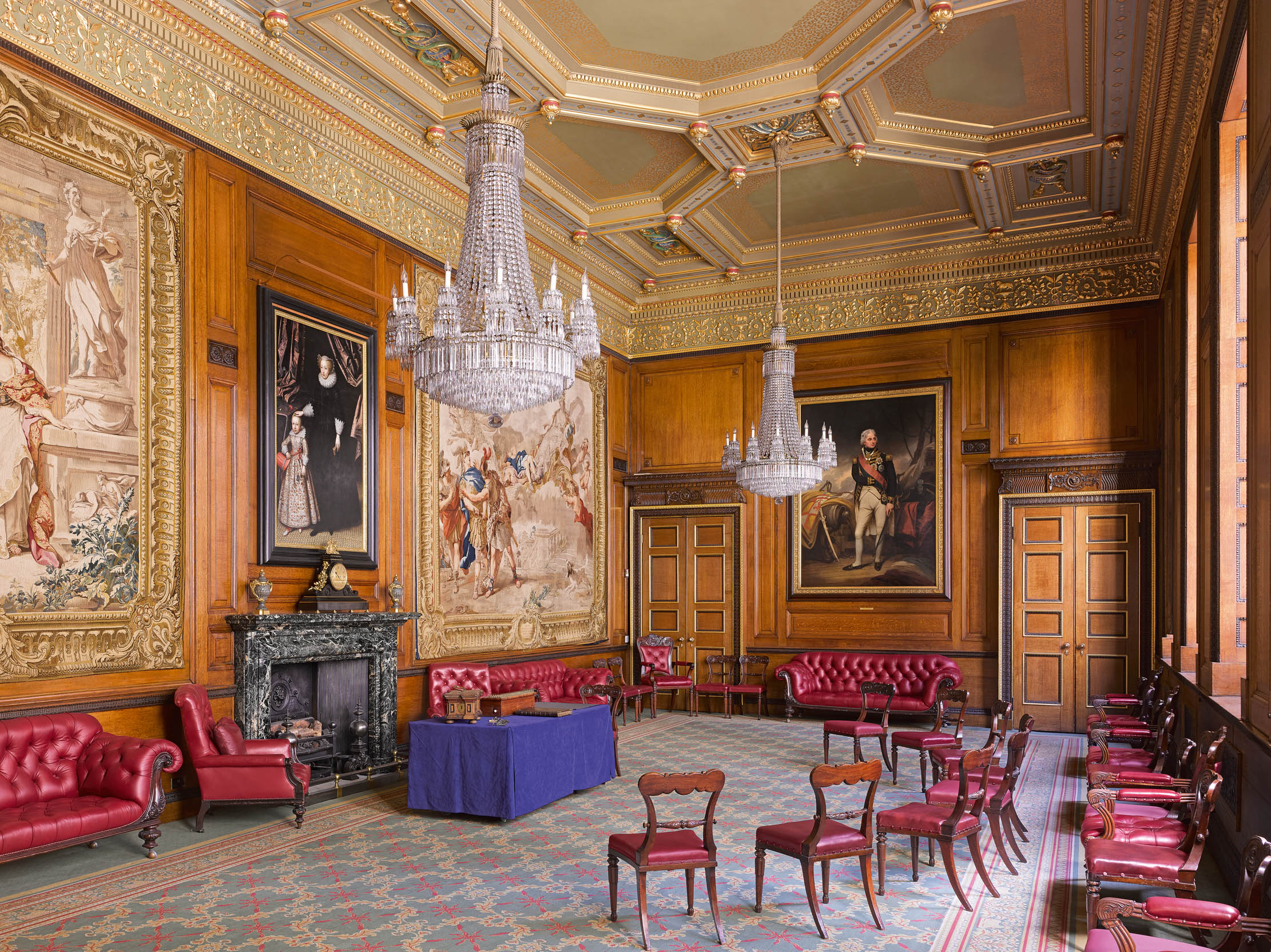
The Great Fire of London in 1666 completely destroyed Drapers’ Hall and a replacement building was completed to the designs of Edward Jerman by Thomas Cartwright, both professionals who were otherwise widely involved in the reconstruction of the City. Work to the shell of the building was finished in 1671, but the fitting out took much longer. By then, the importance of the wool trade had diminished and membership of the company was increasingly by descent or ‘patrimony’, a tradition that continues to the present. Such were its inherited resources, however, that it could afford the huge rebuilding costs of more than £13,000.
The new building comprised a series of first-floor reception rooms organised around a central courtyard. This essential arrangement has been preserved, but only one 17th-century room, now the Court Dining Room (Fig 5), survives. The subsequent evolution of the interior has been described in detail by John Martin Robinson (COUNTRY LIFE, November 15 and 22, 1979). In 1778, after another damaging fire, the rooms on three sides of the courtyard — that to the south overlooking Throgmorton Street, the Livery Hall to the east and Court Room to the north — as well as the staircase that gave access to them, were rebuilt or adapted by London architect John Gorham, also Surveyor of the Company.
One of his successors in that role, Herbert Williams, working with the support of the surveyor of St Paul’s Cathedral, F. C. Penrose (such joint endeavours are a recurrent peculiarity of the company’s building projects), then attempted to improve and enlarge the hall from 1866. Their plans grew steadily in ambition and eventually resulted in the creation of the present heart of the building, the Livery Hall (Fig 2). It combined in one huge volume the space that had been formerly occupied by the hall’s predecessor and Gorham’s staircase. This enlargement consequently demanded a replacement stair, which was incorporated behind the rebuilt street façade. At the same time, a new drawing room (Fig 4) was created to the west of the internal courtyard and the courtyard itself was reconstructed with sculpture by Edward Wyon. All was executed in a Renaissance Italian style.
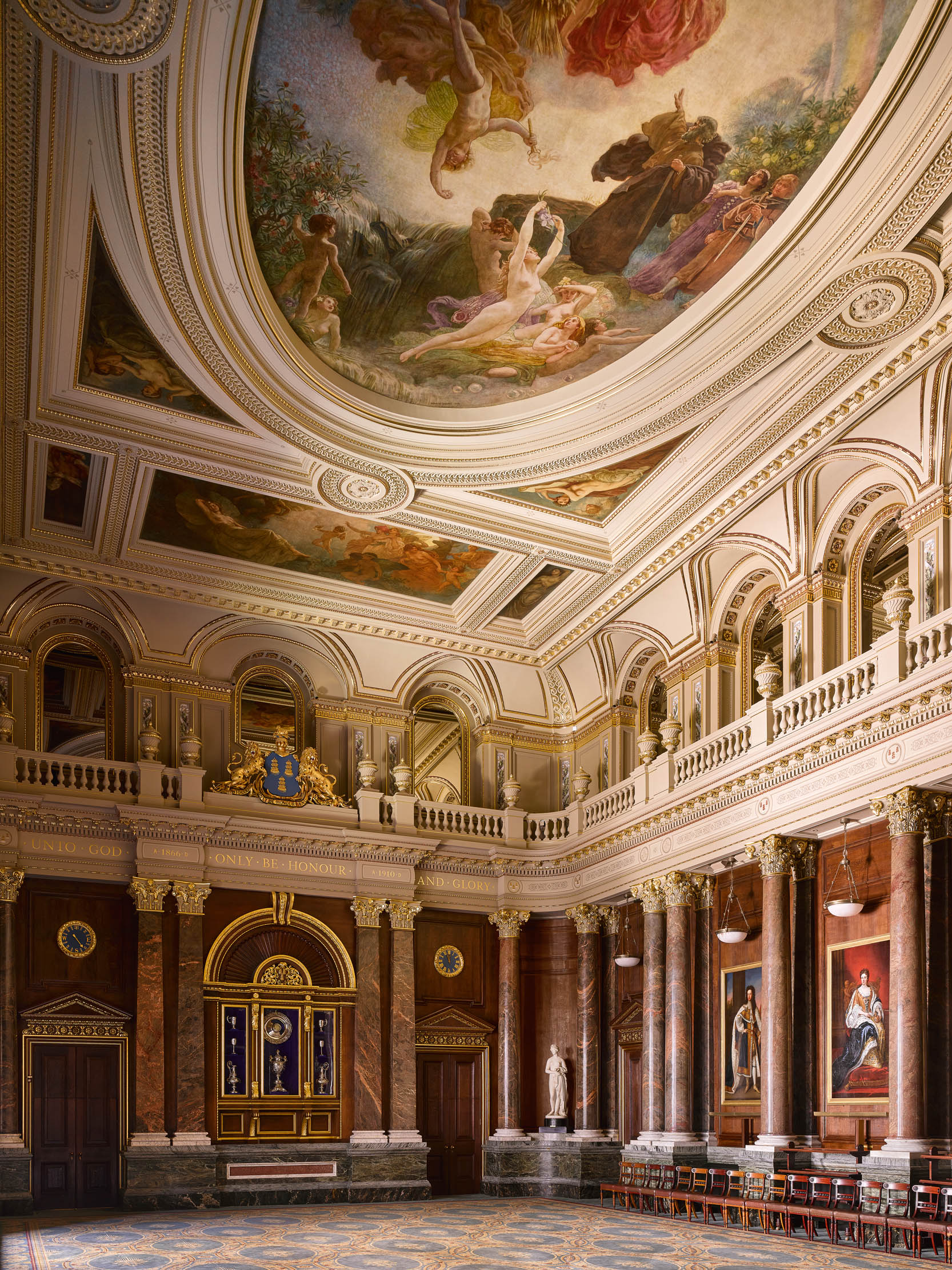
The reordered building was then decorated and furnished throughout by John G. Crace and Sons at the massive cost of £9,113. Additions they oversaw include the heraldic decoration of the Court Dining Room and the painting of the Legend of the Golden Fleece by Félix-Joseph Barrias inserted in its 17th-century ceiling. The same subject, which has an obvious relevance to drapery, is also depicted in the Gobelin tapestries purchased in 1881 and hung here and in the Court Room (Fig 6), the space used today for meetings of the governing body of the Company.
Further alterations followed from 1897 with the reconstruction (yet again) of the street front in its present form, with shops, by the company surveyor, Sir Charles Reilly, working with the architect Thomas Graham Jackson. It was Jackson who designed the splendid front door, as well as the present main stair (Fig 3) and a gallery along the street front in 1898–99. In 1903, the artist H. J. Draper was commissioned to paint several works for the company, including the ceiling of the Livery Hall with scenes from Shakespeare’s The Tempest and A Midsummer Night’s Dream (Fig 7). Finally, the interior was completely redecorated before the First World War by White Allom.
This complex overlay of different periods of decoration — augmented over time by specially commissioned furniture and art of the highest quality — has created interiors of exceptional magnificence. The least satisfactory of them, however, was the hall, which suffered serious damage in the Second World War. Its interior, as completed by Crace in 1870, had also been much simplified. Recent improvements to the room began in 2015, with the installation of a new carpet designed by Helen Owen and woven by the Grosvenor Wilton Company in Kidderminster.
The forced closure of the premises during lockdowns last year gave the opportunity for further improvements overseen by the architectural practice Purcell with both Hirst Conservation and Coniston consecutively acting as contractors. Paint advice for the complete redecoration of the interior was given by Tim Dolby and executed by Hare & Humphreys. It absorbed 70,000 sheets of gold leaf. Sutton Vane Associates designed the lighting scheme and the pendant lights were made by Hector Finch of Herefordshire, inspired by drawings of long lost Victorian fittings. The work required 7½ miles of scaffolding poles. Rehung with its sequence of royal portraits, it’s the perfect backdrop to the life of a company that, through its numerous charitable endeavours, aims for the present and future to be ‘an enduring force for good’.
Visit www.thedrapers.co.uk

John spent his childhood in Kenya, Germany, India and Yorkshire before joining Country Life in 2007, via the University of Durham. Known for his irrepressible love of castles and the Frozen soundtrack, and a laugh that lights up the lives of those around him, John also moonlights as a walking encyclopedia and is the author of several books.
-
 How an app can make you fall in love with nature, with Melissa Harrison
How an app can make you fall in love with nature, with Melissa HarrisonThe novelist, children's author and nature writer Melissa Harrison joins the podcast to talk about her love of the natural world and her new app, Encounter.
By James Fisher
-
 'There is nothing like it on this side of Arcadia': Hampshire's Grange Festival is making radical changes ahead of the 2025 country-house opera season
'There is nothing like it on this side of Arcadia': Hampshire's Grange Festival is making radical changes ahead of the 2025 country-house opera seasonBy Annunciata Elwes